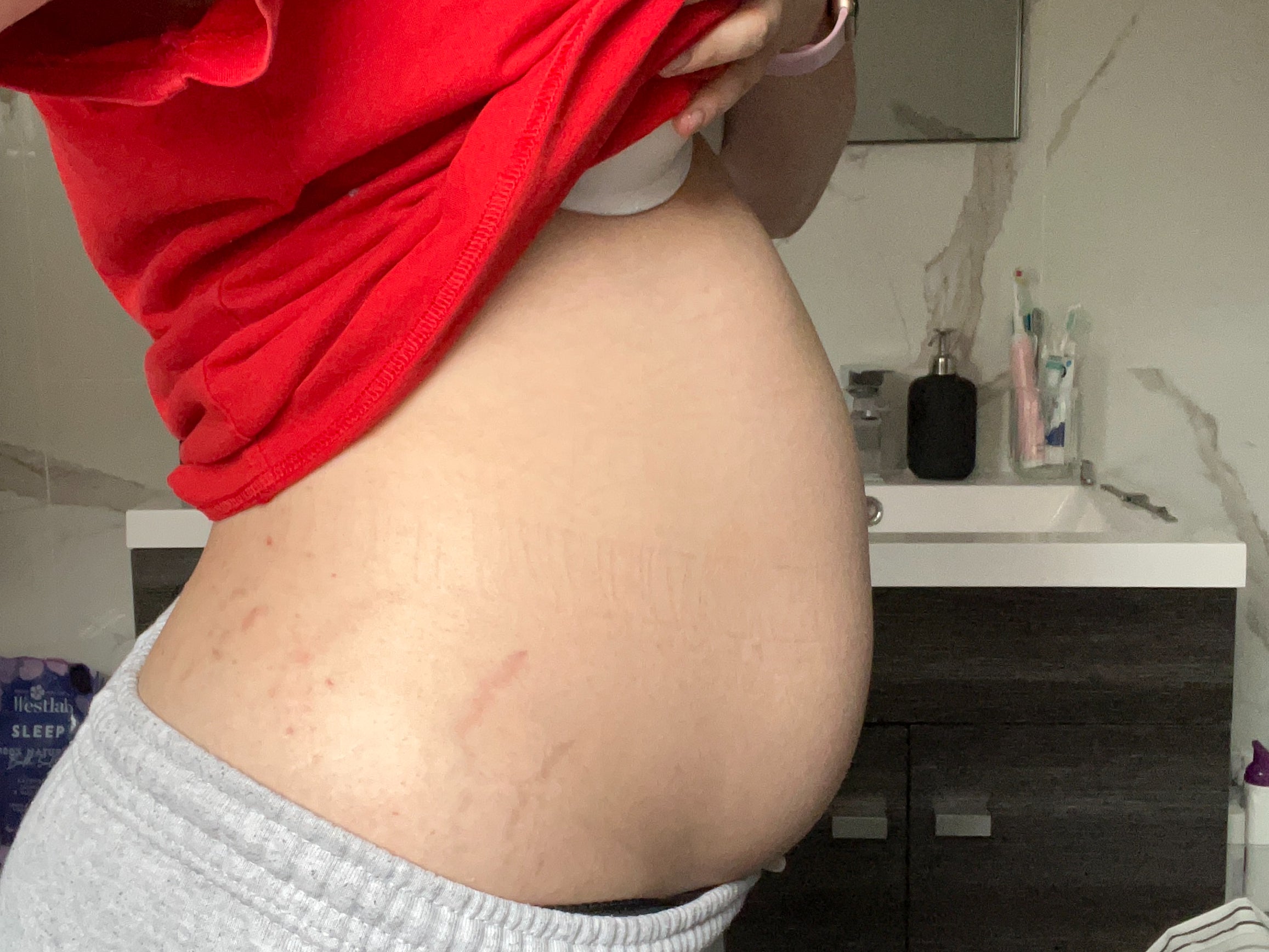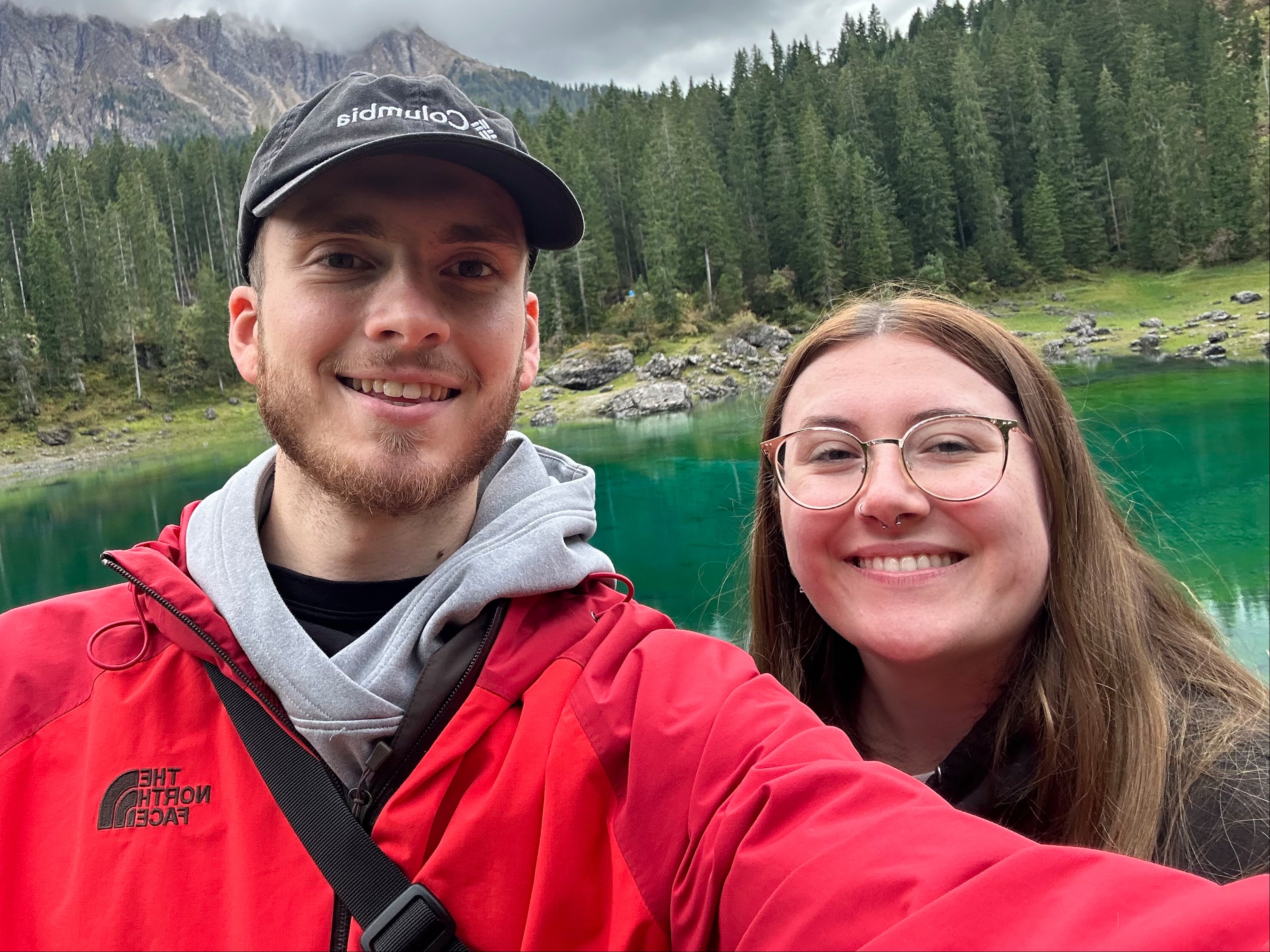Doubled over with “horrific” abdominal pain, Natasha Reynolds was hoping for answers when she was forced to turn to A&E after multiple doctors had been unable to find the cause of her symptoms for almost 18 months.
What they eventually discovered was a 20cm-wide tumour on her right ovary, weighing 2kg.
Ms Reynolds, 23, is one of the thousands of women to be diagnosed with ovarian cancer each year – and one of the 40 per cent of women in England and Wales who are only diagnosed once their symptoms have become so severe they’re forced to seek emergency care.
Since her diagnosis last year, she has had both ovaries removed and is now forced to take Hormone Replacement Therapy (HRT) medication.
In late 2022, Ms Reynolds visited her GP after having developed cystic acne and “terrible” bloating. However, in each appointment, multiple doctors told her the symptoms were either irritable bowel syndrome or flare-ups of endometriosis – a painful condition which causes tissue to grow outside the uterus – which she had been diagnosed with in 2019.
“Throughout 2023 into the start of 2024, I on average visited the GP practice at least once a month. My bloating was getting quite extreme, my fatigue was almost crippling, no matter how much I slept, I didn’t have the motivation to do my uni work. It was just awful.
“I just wasn’t listened to, every time I went to the GP it was ‘oh it’s probably an endometriosis flare up’ or your bloating is probably IBS,” she told The Independent.

Ms Reynolds’ bloating had become so bad that she could no longer button up her jeans, and her acid reflux kept her up at night. Although she suspected ovarian cancer, Ms Reynolds said doctors continued to “dismiss” her symptoms, and did not even carry out a physical examination.
Even specialist gastrointestinal doctors whom she had been referred to did not pick up the tumour, she said.
Eventually, on the evening of 18 March 2024, Ms Reynolds was suddenly hit with a “horrific” pain in her lower abdomen.
“I couldn’t move, I literally could not move, I was just laid there crying.”
The pain was so severe she thought she might have burst her appendix, so she phoned the non-emergency NHS helpline 111. She was then forced to wait for eight hours, only for helpline doctors to tell her the pain was likely due to a urine infection and that she should see her GP.
But the pain was so bad, Ms Reynold decided to go to a walk-in clinic, where she was eventually sent to A&E.
“At five six o’clock I went for an ultrasound, and they pulled me and my parents into a room… they said we found a lump… it was 22cm, it was huge.”

Even then, doctors did not suspect ovarian cancer and told her it was likely a cyst.
A month later, in April 2024, she was finally diagnosed with Stage 1a Germ Cell Ovarian Cancer – a rare form of ovarian cancer, which typically affects people up to their early 30s.
“I was devastated at the way everything had been handled, and I cried and I cried… but equally I was relieved we were now making the right steps,” she said.
By the time she was diagnosed, the tumour, on her right ovary, had become so big it was over 20cm wide and weighed 2kgs, and had wrapped around her ovary. Doctors eventually discovered that she also had 13cm cyst on her left ovary.
“I’m still angry, I think women’s health, we’re so ignored and so dismissed… the majority of women will have been experiencing symptoms and see their GP,” she said.

Charity Ovarian Cancer Action said a number of factors contributed to late diagnoses, including women having symptoms dismissed or misdiagnosed, and low awareness of symptoms.
“Overall, progress has completely stalled,” said Cary Wakefield, chief executive of Ovarian Cancer Action.
“Nearly half of women with ovarian cancer are only diagnosed once their symptoms are so severe they end up in A&E.
“This is a failure of awareness, of diagnosis, and of the system. And it’s costing lives.
The national ovarian cancer audit report, published on Thursday, also highlighted how significant numbers of women with the disease are only diagnosed once it has already spread to another part of the body – making it harder to treat. Just 32 per cent of cases were diagnosed at this stage in 2022 in England, and 24 per cent of cases in Wales.
According to the figures, 70 per cent of women in England diagnosed with ovarian cancer in 2022 survived a year after their diagnosis and 73 per cent of women in Wales.
Ovarian Cancer Action has launched a new symptoms checker https://ovarian.org.uk/ovarian-cancer/ovarian-cancer-symptoms/ovarian-cancer-symptoms-checker/

